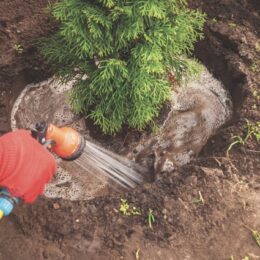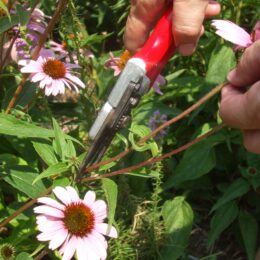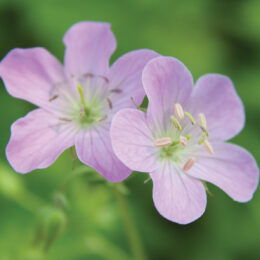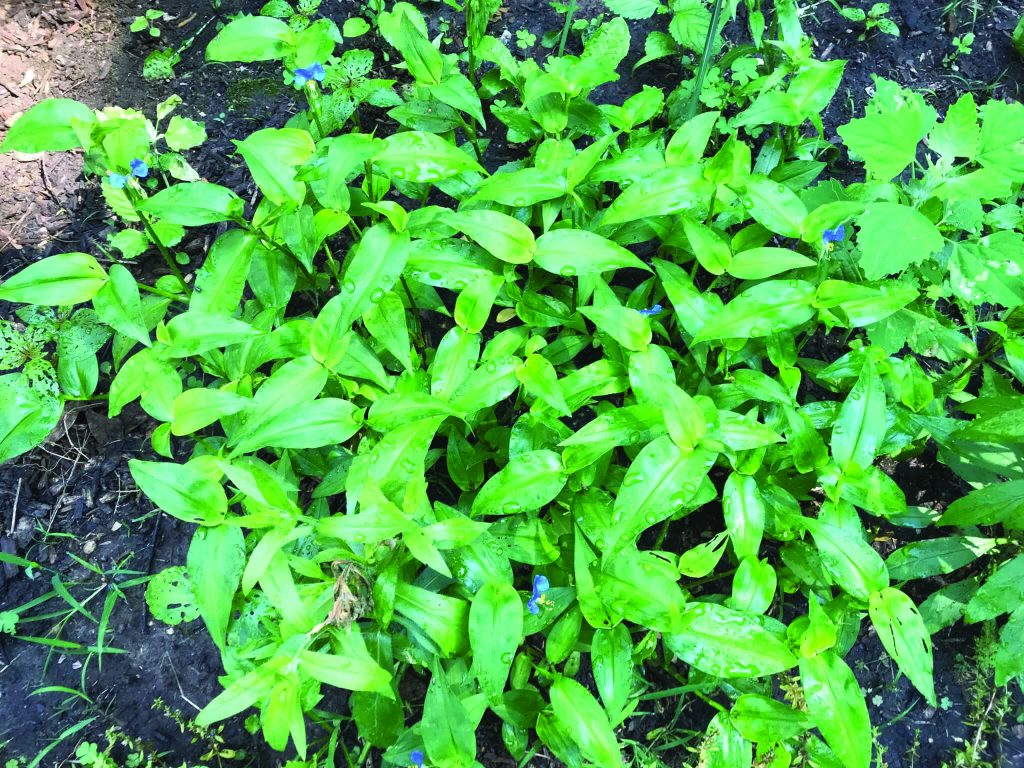
By B. Rosie Lerner
Q: I’m having an argument with my wife about a plant in our yard, and we hope you can help arbitrate. I’ve sent a photo of a plant that we found growing near some shrubs. Neither of us remember planting it. My wife thinks it’s pretty ground cover and that we should let it stay. I think it’s a weed and that we should get it out of there before it takes over the whole bed. My wife said, “Ask Rosie!” — W & M, Lebanon, Indiana
A: You could both be right, but if I have to choose, I’d say you win the argument! Your photo appears to be Commelina communis, more commonly known as Asiatic dayflower. I’ve included a photo that shows both flowers and leaves. It does have pretty blue flowers, but this non-native plant is generally considered a weed. Because the plant tends to sprawl along the ground, the stems root when they stay in contact with moist soil. This species can form a dense colony that outcompetes other plants. Dig the plant out, removing as much of the root system as possible.
There is a native, closely related species known as slender dayflower, Commelina erecta, that has more narrow-shaped leaves, is more upright, does not form dense colonies, and tends to be found in drier soils.
For more information about each of these species:
Asiatic dayflower — www.illinoiswildflowers.info/weeds/plants/asia_dayflower.htm
Slender dayflower — www.illinoiswildflowers.info/prairie/plantx/sl_dayflower.htm
Q. Can you tell me what kind of tree this is? They were planted near our community lake 25 years ago. — K.M., Indianapolis
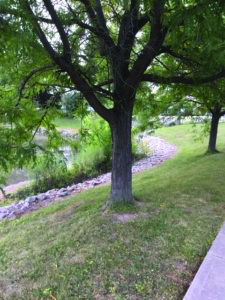
A. This is a honey locust tree, known botanically as Gleditsia triacanthos. The species is native to the eastern United States. It has large seed pods and trunks that are armed with wicked thorns. Fortunately, most plants sold for landscape specimens are cultivars that are both seedless and thornless. But even these improved cultivars frequently drop small- to medium-size branches in high winds.
Q. I have a Bradford pear tree in my front yard that split in half with the recent high winds. This has occurred many times in my development over the years. Is it safe to let half the tree remain standing? If I remove the tree, what good, strong trees that are more wind resistant do you recommend?
A. Bradford pears are notorious for breaking up in high winds, but the extreme winds experienced statewide damaged many sturdier trees as well.
You would be wise to remove what is left of the tree. Bradford and all other cultivars of the ornamental (callery) pear are now considered invasive in Indiana. This is a good opportunity to replace with a better choice.
Here are links to additional information on the callery pear as well as a publication on alternatives to invasive ornamentals:
www.purdue.edu/hla/sites/yardandgarden/a-pearfect-nightmare
www.extension.purdue.edu/extmedia/ID/ID-464-W.pdf
B. Rosie Lerner is the Purdue Extension consumer horticulturist and is a consumer of Tipmont REMC. Questions about gardening issues may be sent to “Ask Rosie,” Indiana Connection, 8888 Keystone Crossing, Suite 1600, Indianapolis, IN 46240-4606, or use the form at IndianaConnection.org.

